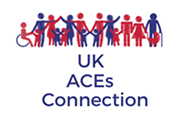Comparison of suicidal ideation, suicide attempt and suicide in children and young people in care and non-care populations: Systematic review and meta-analysis of prevalence☆
Highlights •Global problem of suicidal ideation, suicide attempt and suicide among young people •Unknown if young people in care are at an elevated risk. •Systematic review comparing prevalence between care and non-care populations •Suicide attempt is more than three times as likely among those in care. •Further comparative studies are required. Abstract Suicide in children and young people is a major public health concern. However, it is unknown whether individuals who have been in the care...
